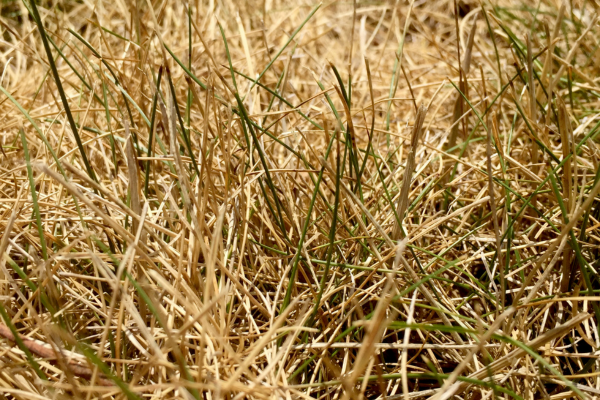Your cart is currently empty!

13 Sep Identifying Chinch Bug Infestations: Signs, Symptoms, And Damage
Maintaining a lush, healthy lawn requires dedication and care, but even the most diligent gardener can face challenges when it comes to pest infestations. One common culprit that can wreak havoc on your lawn is the chinch bug (Blissus spp.). These tiny pests may be small in size, but their impact can be significant, causing unsightly brown patches and weakening the overall health of your turf. In this blog, we’ll be identifying chinch bug infestations by recognizing the signs, symptoms, and damage they leave behind.
Chinch bugs are small bugs belonging to the family Blissidae. Despite their minute size, ranging from 1/5 to 1/6 of an inch in length, they can pose a considerable threat to lawns, especially in North America. Chinch bugs prefer warm-season grasses, such as St. Augustinegrass, Bermuda grass, and Zoysiagrass, but they can also infest cool-season grasses under certain conditions.
Identifying Chinch Bugs
To confirm the presence of chinch bugs, you must know how to identify these tiny pests:
- Physical Characteristics: Chinch bugs have black bodies with white wings folded over their backs. Nymphs, the immature chinch bugs, are reddish orange with a white band across their abdomens. As they grow, they develop black wing pads.
- Size: Chinch bugs are tiny, ranging from 1/5 to 1/6 of an inch in length. Their small size makes them challenging to spot individually, but their aggregated feeding can cause noticeable damage to lawns.
Damage Caused By Chinch Bugs
Chinch bugs can cause significant damage to your lawn, impacting its overall health and appearance:
- Thinning And Dying Grass: The primary damage caused by chinch bugs is the destruction of grass blades as they feed. This feeding behaviour leads to patches of thinning or dying grass, creating unsightly brown areas in your lawn.
- Weak Roots: Chinch bug feeding can damage the grass’s root system, reducing its ability to absorb nutrients and water. Weakened roots make the grass more susceptible to drought stress and other environmental pressures.
- Vulnerable To Other Stresses: A chinch bug-infested lawn becomes more vulnerable to other stressors, such as heat, drought, and diseases. Weakened grass is less resilient, making it difficult for the lawn to recover from various challenges.
Preventing And Managing Chinch Bug Infestations
Prevention is always the best approach when it comes to lawn pests. Here are some preventive measures and management strategies to help you control chinch bug populations:
- Lawn Maintenance: Maintain a healthy lawn through proper cultural practices, such as regular mowing, appropriate watering, and fertilization. A robust lawn is more resilient to chinch bug feeding.
- Thatch Control: Thatch is the layer of dead grass and roots that accumulate near the soil surface. Excessive thatch can provide hiding places for chinch bugs. Periodic dethatching can help reduce their habitat.
- Proper Irrigation: Avoid overwatering your lawn, as this creates conditions favourable for chinch bugs. Water deeply and infrequently, allowing the soil to dry out between watering.
- Natural Predators: Encourage the presence of natural predators, such as birds and beneficial insects, which feed on chinch bugs and help control their populations.
- Insecticides: In severe infestations, targeted insecticide applications may be necessary. Choose insecticides labelled for chinch bug control and follow the instructions carefully to avoid harming beneficial insects.
Being able to identify chinch bug infestations and understand the signs, symptoms, and damage they cause is crucial for maintaining a healthy and vibrant lawn. Early detection and timely action can prevent chinch bug populations from reaching damaging levels, saving you time, effort, and the beauty of your lawn.
By implementing proper lawn maintenance practices and adopting preventive measures, you can create an environment where your lawn thrives, and chinch bugs are less likely to pose a threat. With vigilance and care, you can enjoy a lush, green lawn that becomes the envy of the neighbourhood, free from the clutches of these tiny but pesky insects.
Maintaining a healthy and thriving lawn is a labour of love and protecting it from the destructive impact of chinch bug infestations is essential. To safeguard your lawn from these tiny yet troublesome pests, we recommend using Nema Globe Flea & Chinch, Bug Buster. Visit the Environmental Factor website and check out our entire range of eco-friendly products. Happy gardening!


